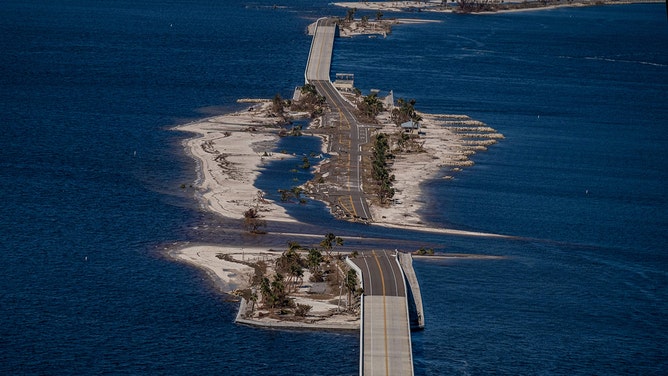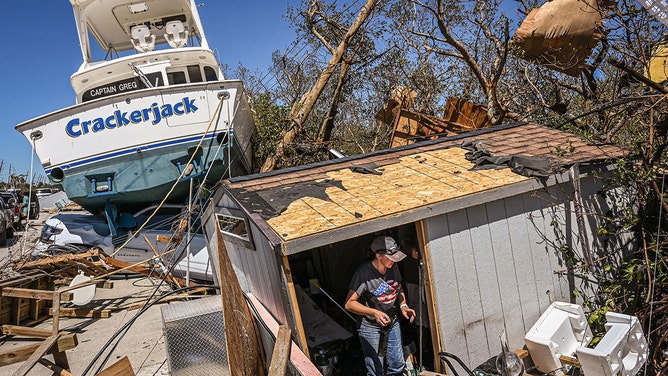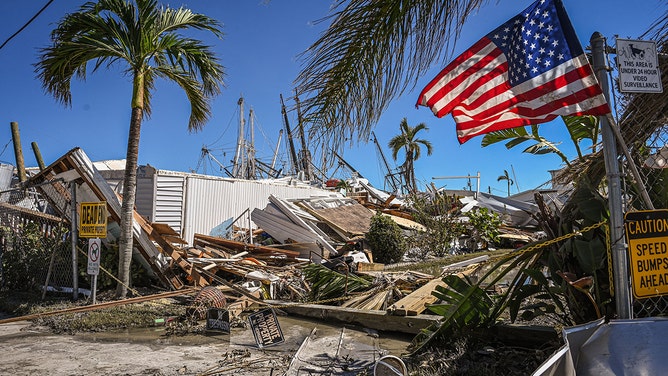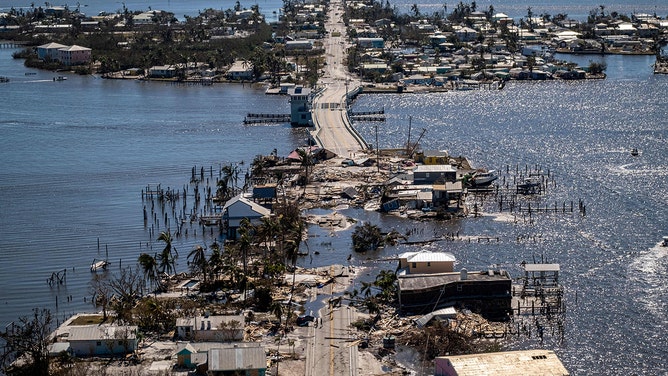How are hurricanes rated? The Saffir-Simpson Hurricane Wind Scale explained
Hurricanes are rated by five categories. Any hurricane that is rated Category 3, 4 or 5 on the Saffir-Simpson Hurricane Wind Scale is classified as a "major" hurricane.
How are hurricanes rated?
The Saffir-Simpson Hurricane Wind Scale explained
Hurricanes in the Atlantic Basin are assigned a Category 1-to-5 rating based on their maximum sustained winds. This classification method is called the Saffir-Simpson Hurricane Wind Scale, and it has been used by the National Hurricane Center (NHC) to evaluate the strength of hurricanes since the early 1970s.
Herbert Saffir, a civil engineer from Florida, and Dr. Robert Simpson, director of the NHC from 1967-74, created this classification scale to categorize hurricanes by the types of damage that typically occur at different sustained wind speeds. Saffir initially developed the scale in 1969, and Simpson expanded it and published it under the Saffir-Simpson name in 1973.
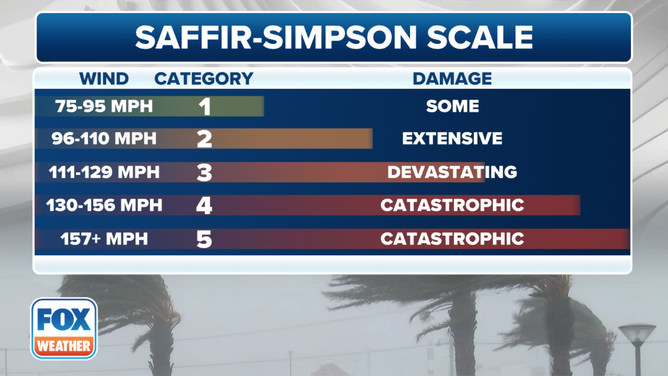
The Saffir-Simpson Hurricane Wind Scale.
(FOX Weather)
The most important thing to note about the Saffir-Simpson Hurricane Wind Scale is that it only accounts for wind speed, not other potentially deadly hazards from hurricanes, such as storm surge flooding, rainfall flooding and tornadoes.
WHAT IS THE ‘CONE OF UNCERTAINTY’ IN HURRICANE FORECASTS?
Water is the No. 1 killer and safety hazard during a hurricane or tropical storm that strikes the U.S. – comprising nearly 90% of all tropical cyclone deaths – mostly by drowning in either storm surge, rainfall flooding or high surf, according to a 2014 study by Dr. Edward Rappaport, the former deputy director of the NHC.
During Rappaport’s 1963-2012 forecast period of study, storm-surge flooding claimed nearly half of the fatalities (49%), rainfall-induced freshwater floods and mudslides accounted for about one-quarter of the deaths (27%), high surf was responsible for some 6% of all hurricane deaths, and another 6% occurred offshore in marine incidents within 50 nautical miles of the coast.
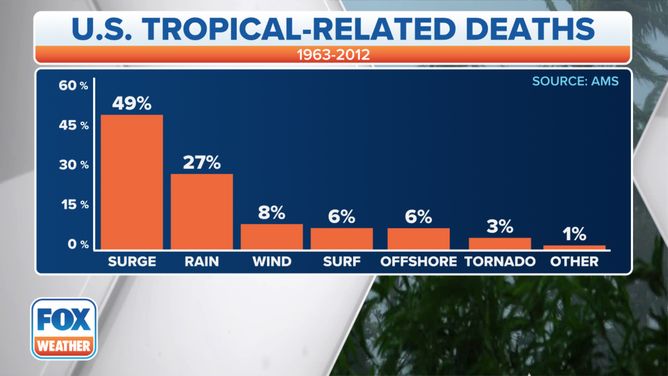
Cause of death in the United States directly attributable to Atlantic tropical cyclones between 1963-2012. (Data: Edward N. Rappaport, National Hurricane Center)
(FOX Weather)
Rappaport found that only 8% of hurricane- or tropical storm-related fatalities were from wind, so the Saffir-Simpson Hurricane Wind Scale might not be the best way to classify a hurricane in terms of its impacts on humans. Regardless, the wind scale does provide guidance on potential property damage from hurricanes of varying wind speeds in the U.S.
WATER FROM HURRICANES, TROPICAL STORMS KILLS MORE IN U.S. THAN WIND
Generally, the amount of damage increases by a factor of four with every category rise on the Saffir-Simpson Wind Scale, the National Weather Service says. More than 85% of all damage from hurricanes comes from Category 3, 4 and 5, referred to as "major" hurricanes, even though they make up only 24% of all landfalling U.S. tropical cyclones.
Below is a more in-depth breakdown of the Saffir-Simpson Hurricane Wind Scale from the NHC, which also provides a video demonstrating the types of damage that will likely occur in each category.
HURRICANE CATEGORIES EXPLAINED: CATEGORY 1 | CATEGORY 2 | CATEGORY 3 | CATEGORY 4 | CATEGORY 5
Category 1 hurricane (74-95 mph): Very dangerous winds will produce some damage
Well-constructed frame homes could have home damage to roofs, shingles, vinyl siding and gutters. Large branches of trees will snap, and shallowly rooted trees may be toppled. Extensive damage to power lines and poles likely will result in power outages that could last a few to several days.
Category 2 hurricane (96-110 mph): Extremely dangerous winds will cause extensive damage

People assess wreckage after Hurricane Francine swept through the area on September 12, 2024 in Houma, Louisiana. Hurricane Francine was upgraded to a Category 2 hurricane when it made landfall on Sept. 11, 2024 along the Louisiana coast. Francine brought upward wind speeds of 90mph, flooding, rolling blackouts and widespread damage along the coast. (Photo by Brandon Bell/Getty Images)
(Getty Images)
More property damage will occur on well-constructed frame homes could sustain major roof and siding damage. Many shallowly rooted trees will be snapped or uprooted and block numerous roads. Near-total power loss is expected, with outages that could last from several days to weeks.
Category 3 hurricane (111-129 mph): Devastating damage will occur
Well-built framed homes may incur major damage or removal of roof decking and gable ends from the wind. Many trees will be snapped or uprooted, blocking numerous roads. Electricity and water will be unavailable for several days to weeks after the storm passes.
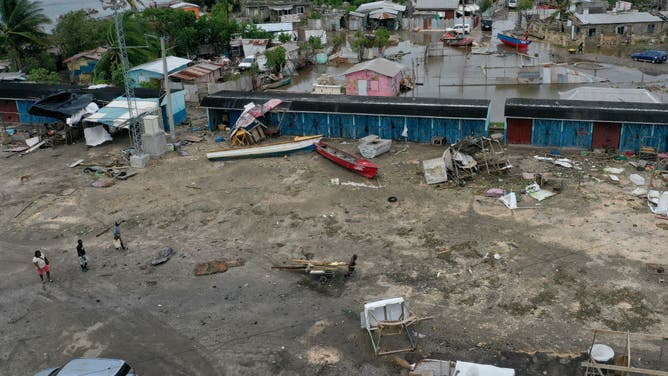
In an aerial view, people in a fishing village recover after Hurricane Beryl passed through the area on July 04, 2024, in Old Harbor, Jamaica. Hurricane Beryl, now a Category 3 storm, continued toward Mexico after passing through Caribbean islands. (Photo by Joe Raedle/Getty Images)
(Getty Images)
Category 4 hurricane (130-156 mph): Catastrophic damage will occur
Well-built framed homes can sustain severe damage, with the loss of most of the roof structure and/or some exterior walls. Most trees will be snapped or uprooted, and power poles will be downed. Fallen trees and power poles will isolate residential areas. Power outages will last weeks to possibly months. Most of the area will be uninhabitable for weeks or months.
Category 5 hurricane (157 mph or higher): Catastrophic damage will occur
The highest hurricane category – A large percentage of framed homes will be destroyed, with total roof failure and wall collapse. Fallen trees and power poles will isolate residential areas. Power outages will last for weeks to possibly months. Most of the area will be uninhabitable for weeks or months.
Hurricane Andrew: 32 years later after Category 5 storm tore through South Florida
FOX Weather Hurricane Specialist Bryan Norcross joins Weather Command to look back at Hurricane Andrew. It was one for the record books, devastating South Florida as a Category 5 hurricane.

